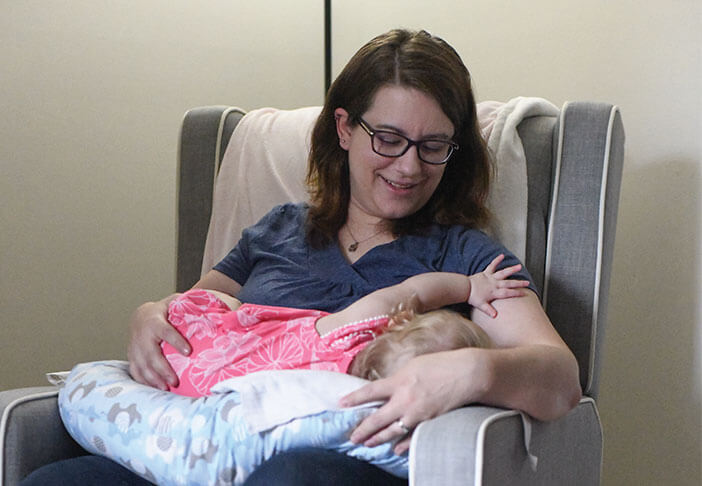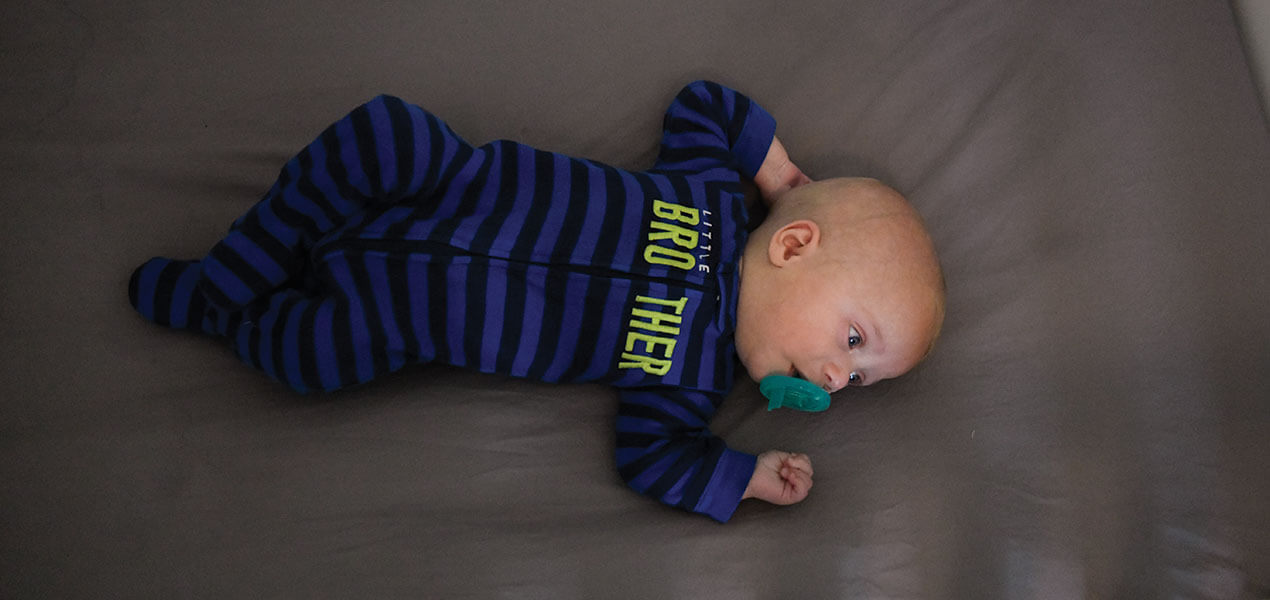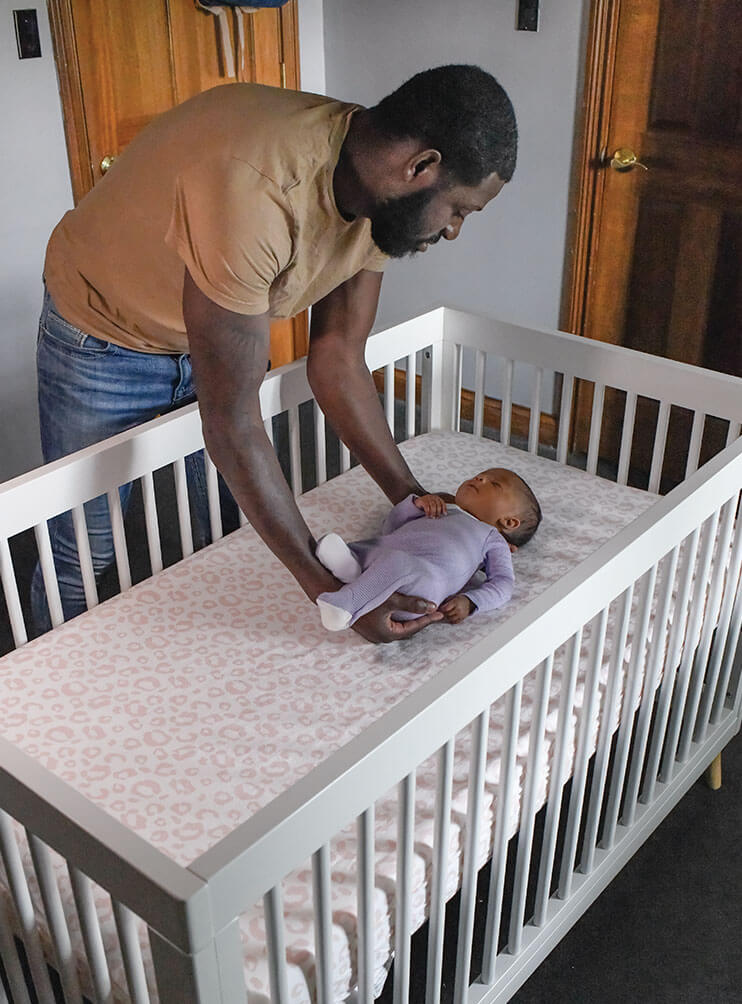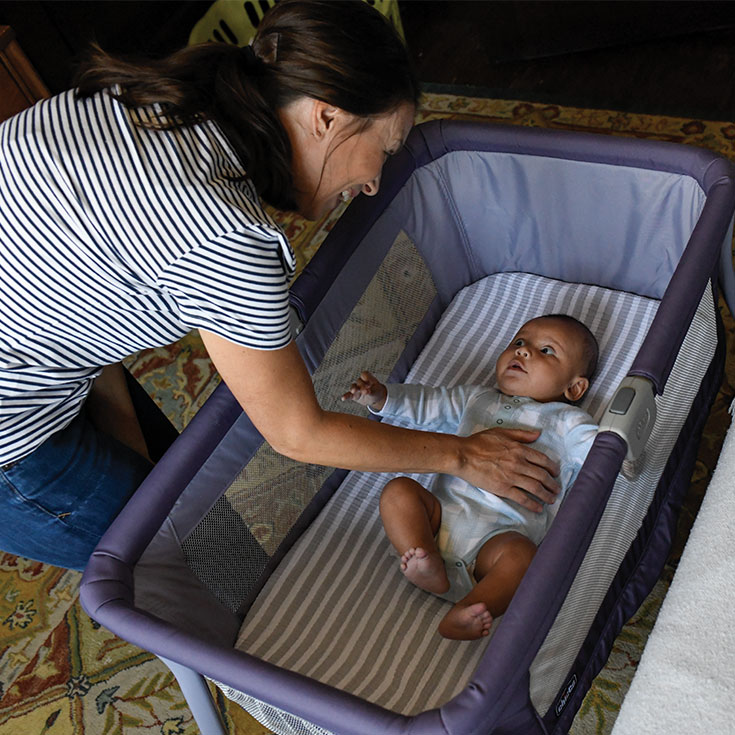
تساعد الرضاعة الطبيعية والنوم الآمن معًا على الحفاظ على صحة رضيعكِ وسلامته.
الرضاعة الطبيعية

- إنَّ إعطاء طفلك لَهّايَة قد يقلل خطر الإصابة بـ "متلازمة موت الرُّضَّع المفاجئ" (SIDS)، ولكن قبل البدء في إعطائه اللَّهايَة، يجب عليكِ الانتظار حتى تشعري أنتِ وطفلكِ بالراحة تجاه الرضاعة الطبيعية.
- حليب ثديكِ يزود طفلك بالعناصر الغذائية اللازمة ويبقيه سعيدًا وبصحة جيدة. كما أنَّ الرضاعة الطبيعية مفيدة لصحتكِ!
- الأطفال الذين يرضعون رضاعةً طبيعية أقل عرضة من غيرهم للإصابة بـ "متلازمة موت الرُّضَّع المفاجئ" (SIDS).
- من الأفضل إعطاء الطفل، خلال الأشهر الستة الأولى من ولادته، لبن الأم فقط. الاستمرار في الرضاعة الطبيعية لمدة سنتين وما بعدها (مع إضافة الأطعمة إلى قائمة غذاء الأطفال بعد مرور الأشهر الستة الأولى) يعزز الفوائد العظيمة والمتعددة التي يحصل عليها الطفل.
النوم الآمن
- احرصي دائمًا على أن ينام طفلك على ظهره طوال أوقات نومه - فترات القيلولة وفي الليل - حتى يبلغ عامه الأول.
- ضعي طفلك في سرير أطفال ثابت، أو مهد متأرجح، أو سرير أطفال محمول مزوَّد بمرتبة ثابتة وشرشف مثبت بإحكام.
- لا تستخدمي الوسائد، أو البطانيات، أو الدمى اللينة، أو مخففات صدمات سرير الأطفال في أي مكان بالمساحة المخصصة لنوم طفلك. ويمكنكِ استخدام كيس النوم بدلاً من البطانية، إذا لزم الأمر.
- يموت طفلان رضيعان كل أسبوع، في المتوسط، في ولاية إنديانا بسبب النوم غير الآمن. يمكنكِ توفير الحماية اللازمة لطفلكِ من خلال اتباع أساسيات النوم الآمن والرضاعة الطبيعية بأمان.
-
لمعرفة المزيد عن النوم الآمن للأطفال الرضّع، تفضلي بزيارة الموقع الإلكتروني الآتي:
https://indiana.wicresources.org/safe-sleep/.

مشاركة الغرفة، وليس السرير

تساعد الرضاعة الطبيعية على تقوية الروابط بينكِ وبين طفلك. يمكن أن يساعدكِ الوجود بالقرب من طفلك الرضيع على معرفة العلامات التي تظهر عندما يكون الطفل جائعًا، كما يسهم هذا القُرب في دعم الرضاعة الطبيعية.
مشاركة الغرفة – خصِّصي لطفلك مساحةً لنومه الآمن داخل غرفتكِ لمدة 6 أشهر على الأقل.
يمكنكِ إرضاع طفلك وأنت في سريرك. وبعد الانتهاء من الرضاعة، ضعي الطفل مرة أخرى في المكان المنفصل المخصَّص لنومه، بحيث يمكنك رؤيته والوصول إليه بسهولة من المكان الذي تنامين فيه.

النوم الآمن للأطفال
تعرفي على المزيد عن .
تعمل هذه المؤسسة بمبدأ تكافؤ الفرص.